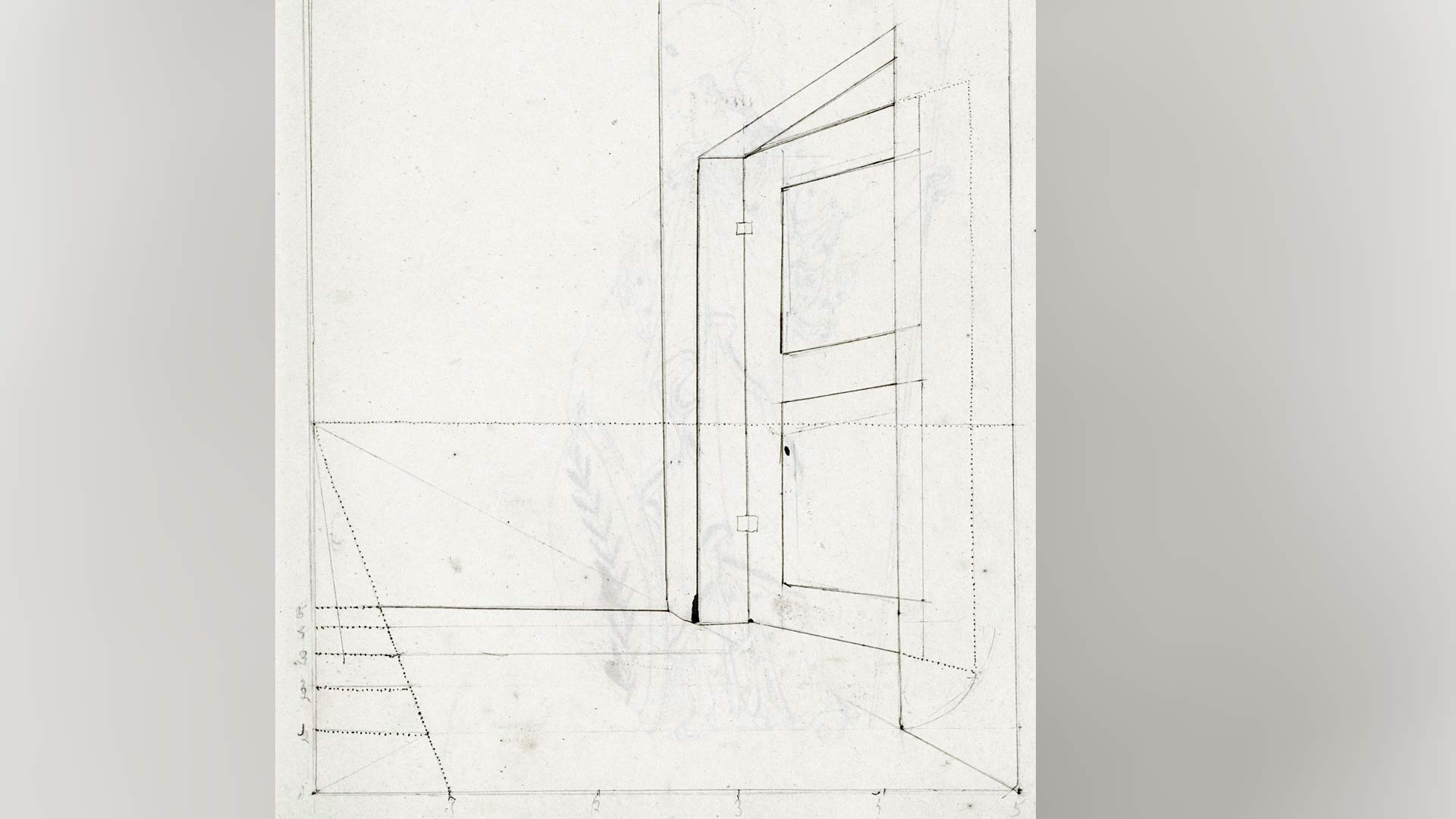Perspectives
Rule 7
workload …
Fluttering lines make it possible to bring in one self.
The expression of an image depends on the choice of perspective
The prospect decides from which angle the viewer looks and what impression the image makes.
Watch the film to learn about the 7th rule.
Script
Hello happy Vanishing Point,
Before drawing a perspective view, we always have to ask ourselves what kind of perspective we are dealing with. Is it a perspective with one vanishing point, or is it a perspective with two vanishing points?
The difference is easy to explain. If you stand in a corridor and look directly at the end of the corridor, it is a single vanishing point perspective. And it is the same with a box, or a house that is standing in front of us: if we see only one façade or side, and not two, then it is a single vanishing point perspective.
If something is at an angle, like the box here, then we need a two-vanishing point perspective… but that will come later.
In fact, perspective is a very simple system. And yet you get the feeling that perspective is something very difficult. That’s why we’re going through it step by step.
What we must always be aware of is that we always think that what is horizontal is also horizontal in the picture, in our sketch. But this is far from the case. Windowsills, for example, are always horizontal. In the picture, however, it is very quickly very, very crooked.
Let’s have a look … this is the entrance area of the University of Applied Sciences Grisons in Chur. ….
So what do we learn? Never trust a direction in the perspective view.
But if you understand the system, it is much easier. So I will explain the system in the following.
Why do we need vanishing points?
The horizon is an infinite line that lies exactly at the viewer‘s eye level. On the horizon, all vanishing points are in a row.
Keep always in mind:
- Horizontal lines above the eye level fall in the view towards the vanishing point (F).
- Horizontal lines under the eye-level rise in the view towards the vanishing point (F).
- Views with only one vanishing point are used for objects that are perpendicular to the observer.
Go to the Rijksmuseum Amsterdam
Perspective with an open door, Catharina Kemper, 1813
pen


